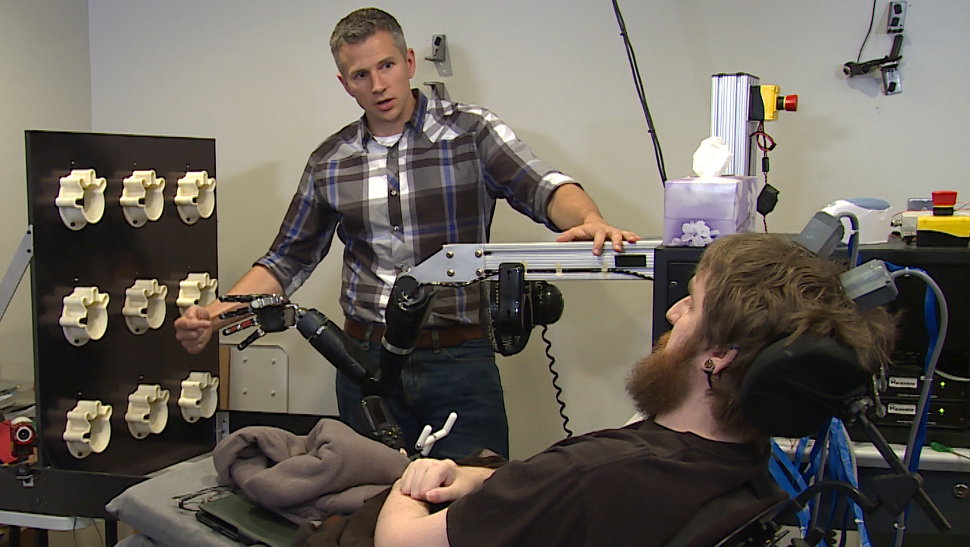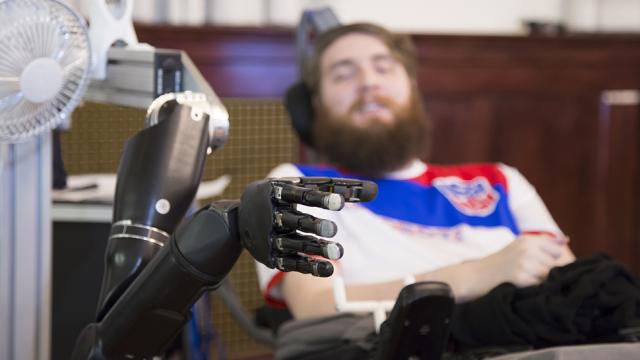Researchers from the University of Pittsburgh and UPMC have developed a system that’s enabling a man with quadriplegia to experience the sensation of touch through a robotic arm that he controls with his brain.
Image: UPMC and University of Pittsburgh Schools of the Health Sciences
Prosthetic limbs are getting better all the time, but they’re still not able to convey the sense of touch to the user. That’s a serious limitation given just how important touch is for hand use. Without it, we wouldn’t be able to tell the difference between a piece of cake or the fork we use to take a bite out of it. A research team led by Robert A. Gaunt from the University of Pittsburgh is the first to develop a system that overcomes this limitation, allowing a paralysed 28-year-old man to feel objects through a robotic limb.
To make it work, the researchers implanted tiny microelectrode arrays — each about the size of a shirt button — into the primary somatosensory cortex of the patient’s brain — the part of the brain that receives all sensory input from the body. Prior to the surgery, brain scans were used to determine where the patient processes touch in each of his fingers and his palm.
After the surgery, currents were delivered through the electrodes. With the help of a computer, this allowed the patient to experience the sensation of touch through a robotic arm.

Image: UPMC and University of Pittsburgh Schools of the Health Sciences
“I can feel just about every finger — it’s a really weird sensation,” said Nathan Copeland in a release, who became paralysed from the chest down following a car accident in 2004. “Sometimes it feels electrical and sometimes it’s pressure, but for the most part, I can tell most of the fingers with definite precision. It feels like my fingers are getting touched or pushed.”
Importantly, the stimulation of the sensory cortex is producing natural sensations instead of tingling, and the sensations were stable for months following the surgery. Copeland, who correctly identified objects about 80 per cent of the time, can feel pressure and discern its intensity to a certain degree, but he can’t identify whether an object is hot or cold. That said, this particular approach could be used to convey information about an object’s location in space, and the pressure needed to interact with and manipulate an object.
“The ultimate goal is to create a system which moves and feels just like a natural arm would,” noted Gaunt in a statement. “We have a long way to go to get there, but this is a great start.”
